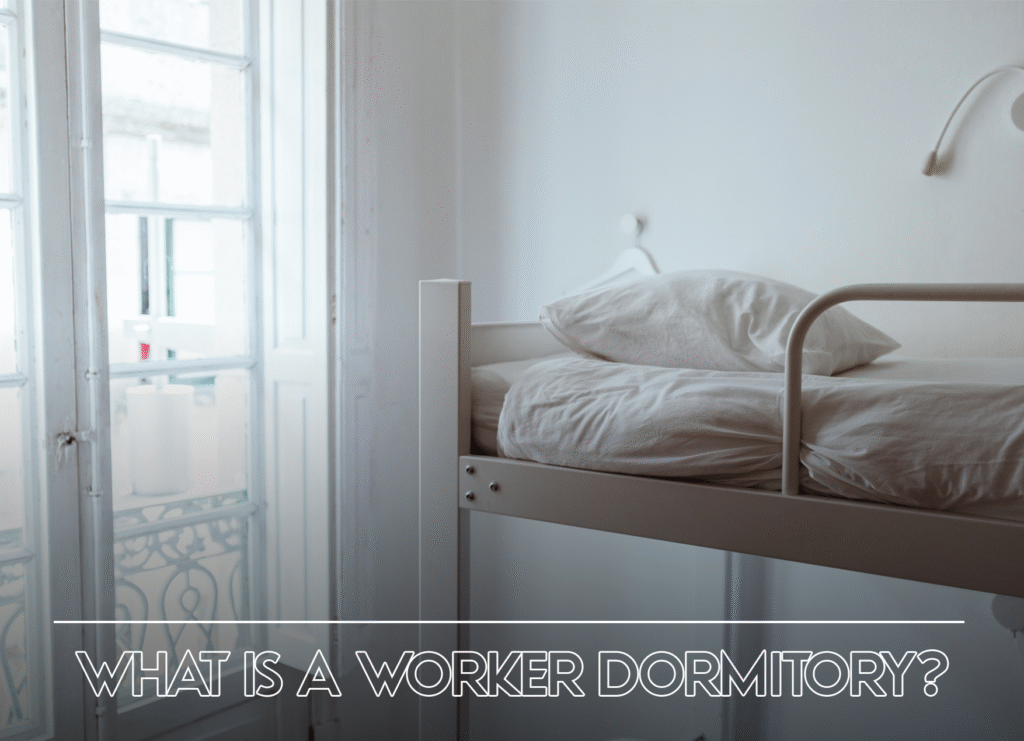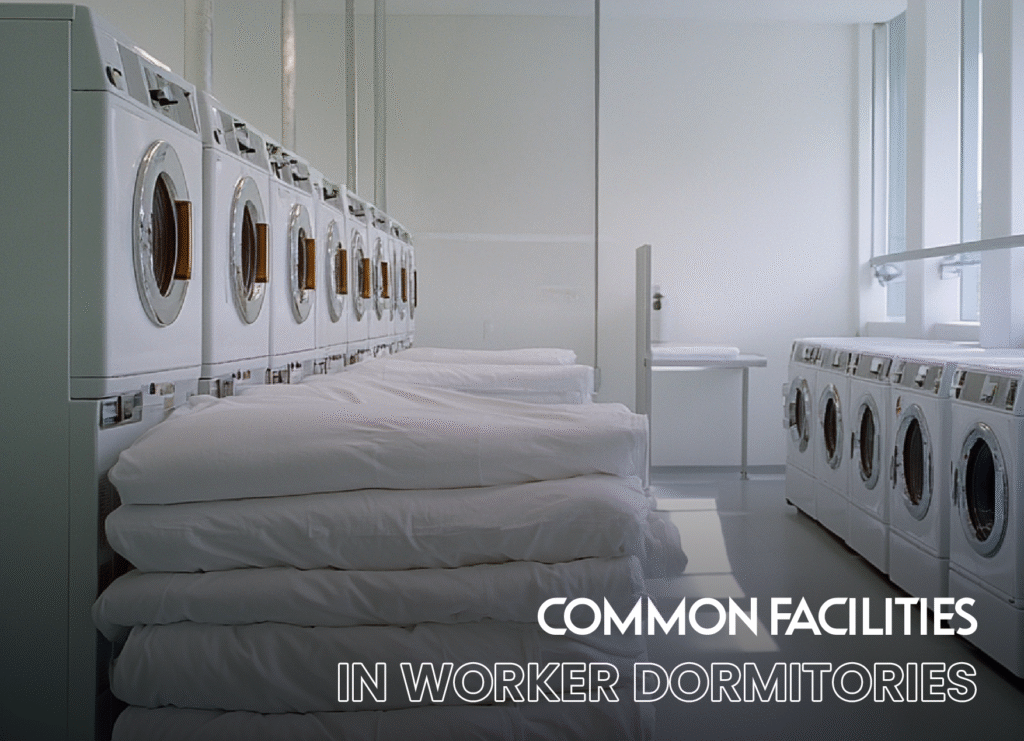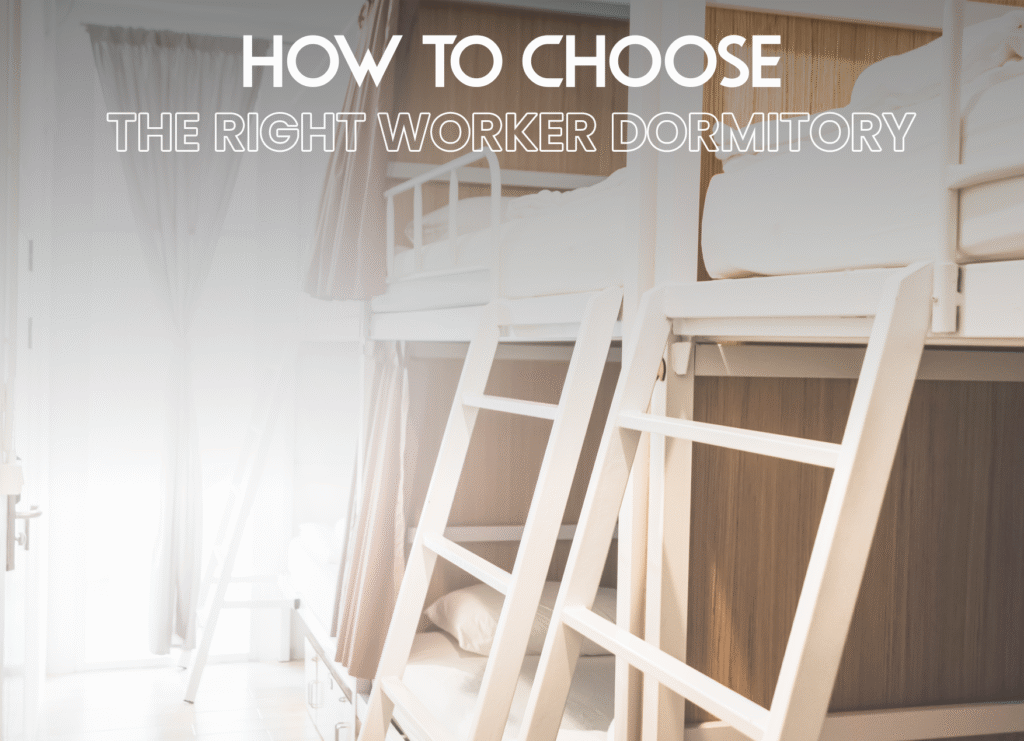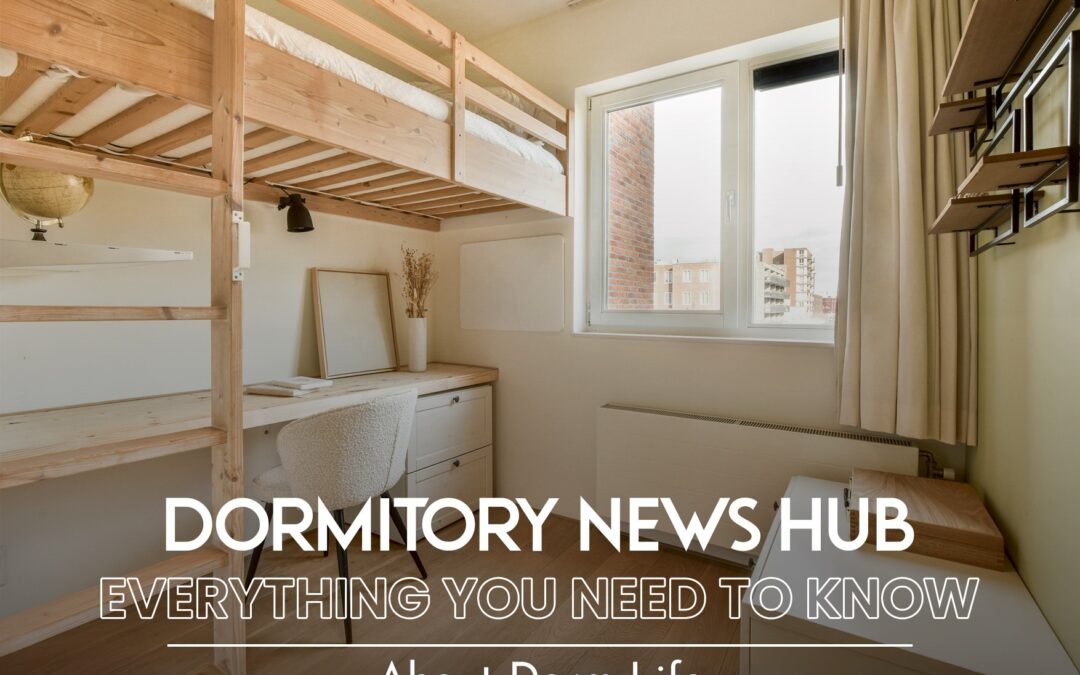Worker dormitories are an essential housing option for workers and employees in many industries, especially manufacturing, construction, and service sectors. Dormitories help reduce commuting expenses, provide convenience for daily living, and create a community where residents can support each other.
In this article, we’ll explore everything you need to know about worker dormitories – from their characteristics, benefits, facilities, and regulations to tips on how to adapt and make dorm life easier.

What is a Worker Dormitory?
A worker dormitory is a shared accommodation provided for employees of companies or factories, usually located near the workplace for easy commuting. Dormitories typically offer single or shared rooms, along with common areas such as bathrooms, kitchens, canteens, or small convenience stores.
Worker dormitories are commonly found in industrial zones, construction sites, and factory estates, especially in countries with large labor populations.
Types of Worker Dormitories
- Company-provided dormitories: Located within or near factories or work sites, managed by the company or major tenants. Rental fees are often included in employee benefits.
- Commercial dormitories: Privately owned accommodations rented on a monthly basis. Employees from various companies live together. Prices, sizes, and facilities vary.
- Government-regulated dormitories: Meet safety, hygiene, and facility standards with strict security and proper management systems.
Why Are Dormitories Suitable for Workers?
For workers, finding suitable housing is crucial because it not only reduces living costs but also affects quality of life, commuting convenience, and daily safety. Many may hesitate between renting a house, a condo, or a dormitory, but in terms of cost-effectiveness, worker dormitories are the most practical choice.
Dormitories are not just temporary housing – they also build small communities where workers can live together safely with essential facilities, allowing them to focus on work without worrying about daily necessities.
Key Reasons Why Dormitories Are Ideal for Workers
- Lower daily living expenses: Dormitory rental is far cheaper than renting a private house or condo. Some companies even offer free accommodation with meals and basic utilities, allowing workers to save more or send money home.
- Close to the workplace with easy commuting: Dormitories are usually located near factories or work sites, saving time and transportation costs. It’s especially convenient for shift work or emergency call-outs, ensuring adequate rest and reducing travel fatigue.
- Complete basic facilities: Modern dormitories have facilities like affordable canteens, shared kitchens, coin-operated laundry machines, Wi-Fi, convenience stores, and small recreational spaces – reducing the need to go far for daily necessities.
- Living with co-workers and building friendships: Workers can easily form supportive relationships with roommates or colleagues, reducing loneliness and fostering cultural exchange and mutual help.
- Better security than private rentals: Large dormitories have comprehensive security measures like 24-hour guards, keycard systems, and CCTV, providing peace of mind for personal safety and belongings.
- Organized management and maintenance: Professionally managed dormitories often include cleaning services, maintenance, health check-ups, and safety briefings, easing the burden of self-management.
- Ideal for foreign workers unfamiliar with the area: For migrant workers, dormitories make adapting easier since they live with others from similar backgrounds and have staff who can provide information and assistance.

Common Facilities in Worker Dormitories
Worker dormitories are designed to meet the needs of large groups, balancing comfort, safety, and livability. Typical facilities include:
- Shared rooms with beds and personal lockers
- Separate male and female bathrooms with proper ventilation
- Canteens or shared kitchens for affordable meals or self-cooking
- Small shops or vending machines for daily essentials
- Coin-operated laundry areas with drying spaces
- Recreational spaces or small sports courts
- Wi-Fi or communal internet access
- Multipurpose halls for social or training activities
- Strict safety and hygiene measures (especially in regulated countries like Singapore)
These facilities not only improve comfort but also enhance the quality of life, reduce stress from hard work, and create a more livable communal environment.
Tips for Living Comfortably in a Worker Dormitory
Living in a dormitory may be a new experience, especially with roommates from diverse nationalities and cultures. Here are tips for a smooth and pleasant stay:
- Respect others and their privacy – keep noise down, especially at night.
- Maintain cleanliness in both personal and shared spaces.
- Learn and follow dormitory rules to avoid future issues.
- Keep your personal area organized to maximize limited space.
- Build good relationships with roommates – small gestures of kindness make dorm life friendlier.
- Practice personal hygiene to prevent illnesses in shared environments.
- Manage your time when using shared facilities like bathrooms or laundry areas.
- Respect cultural and religious differences among residents.
The Future of Worker Dormitories
Worker dormitories are evolving beyond simple housing into modern, sustainable, and community-focused living spaces. Future trends include:
- Smart technology dormitories – facial recognition access, digital apps for maintenance requests, AI security cameras.
- Eco-friendly and sustainable dorms – solar power, waste recycling, water reuse systems.
- Improved communal areas – fitness rooms, recreational zones, libraries, and skill development centers.
- Professional dorm management – using big data and AI for energy optimization, maintenance planning, and resident support.

How to Choose the Right Worker Dormitory
When selecting a dormitory, consider these factors:
- Proximity to work – saves time, reduces transport costs, lowers stress.
- Affordable and transparent pricing – check if rent includes utilities to avoid hidden costs.
- Complete facilities – canteens, Wi-Fi, shops, kitchens, laundry, and relaxation spaces.
- High security – CCTV, 24-hour guards, keycard-controlled access.
- Friendly community – a supportive social environment helps adjustment.
Recommended: Avery Dormitory – Singapore’s Standard for Worker Housing
If you’re looking for a dormitory that meets all these needs, Avery Dormitory is the perfect choice.
- Conveniently located near major workplaces
- Affordable pricing with transparent management
- Complete facilities: canteens, shops, Wi-Fi, and relaxation areas
- Strict security with 24-hour surveillance and guards
- Friendly community with supportive networks
Whether you’re a foreign worker or a company seeking accommodation for your employees, Avery Dormitory enhances both quality of life and work efficiency.
Conclusion
Living in a worker dormitory is an ideal solution for employees who need affordable, well-managed accommodation close to their workplace. It fosters a sense of community, provides essential amenities, and ensures safety.
In the future, worker dormitories will continue to evolve into safer, smarter, and more sustainable housing solutions, improving the lives of workers while supporting the growth of industrial sectors.

